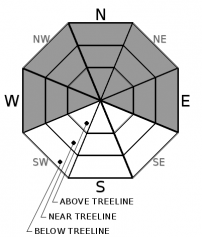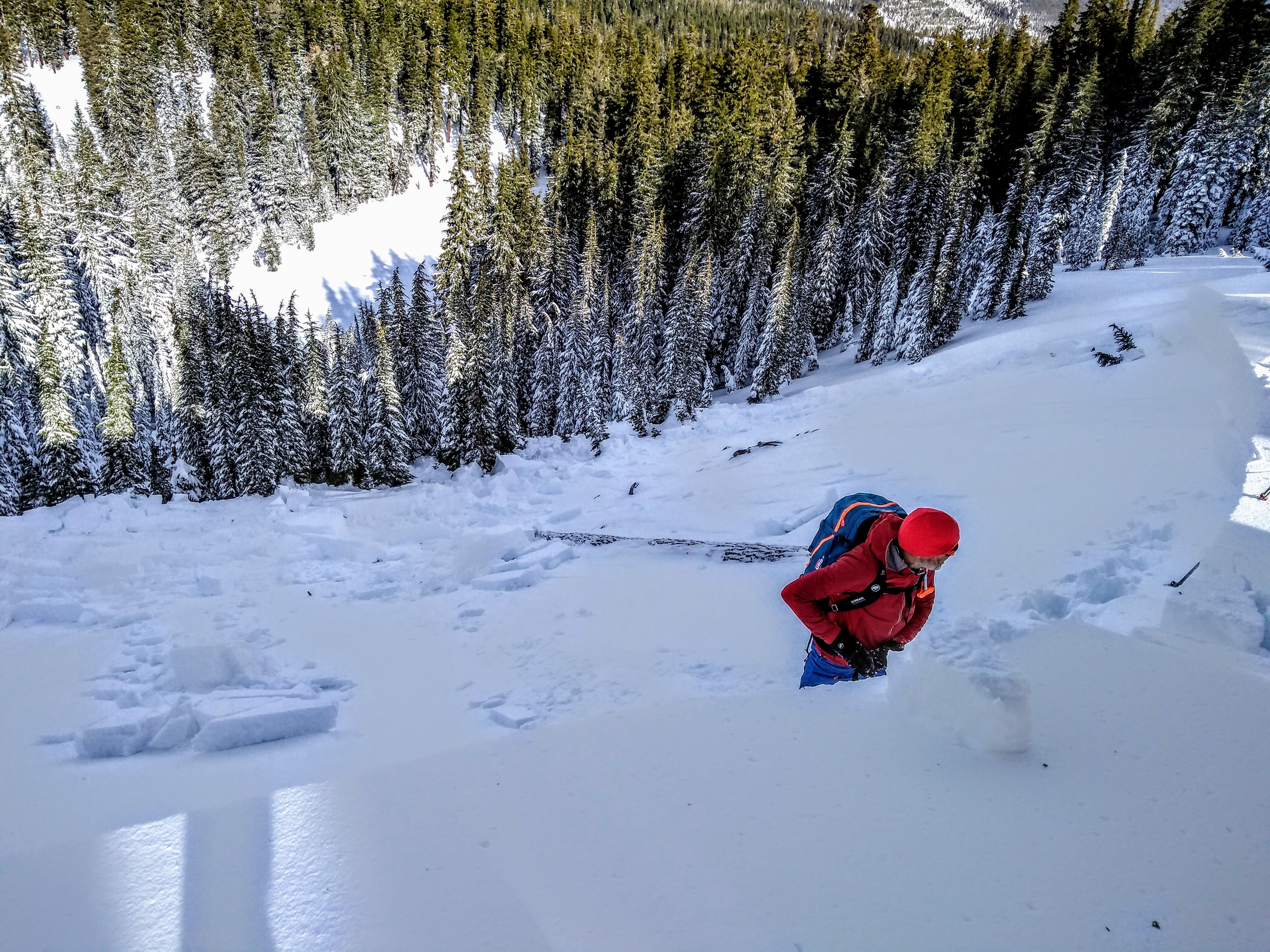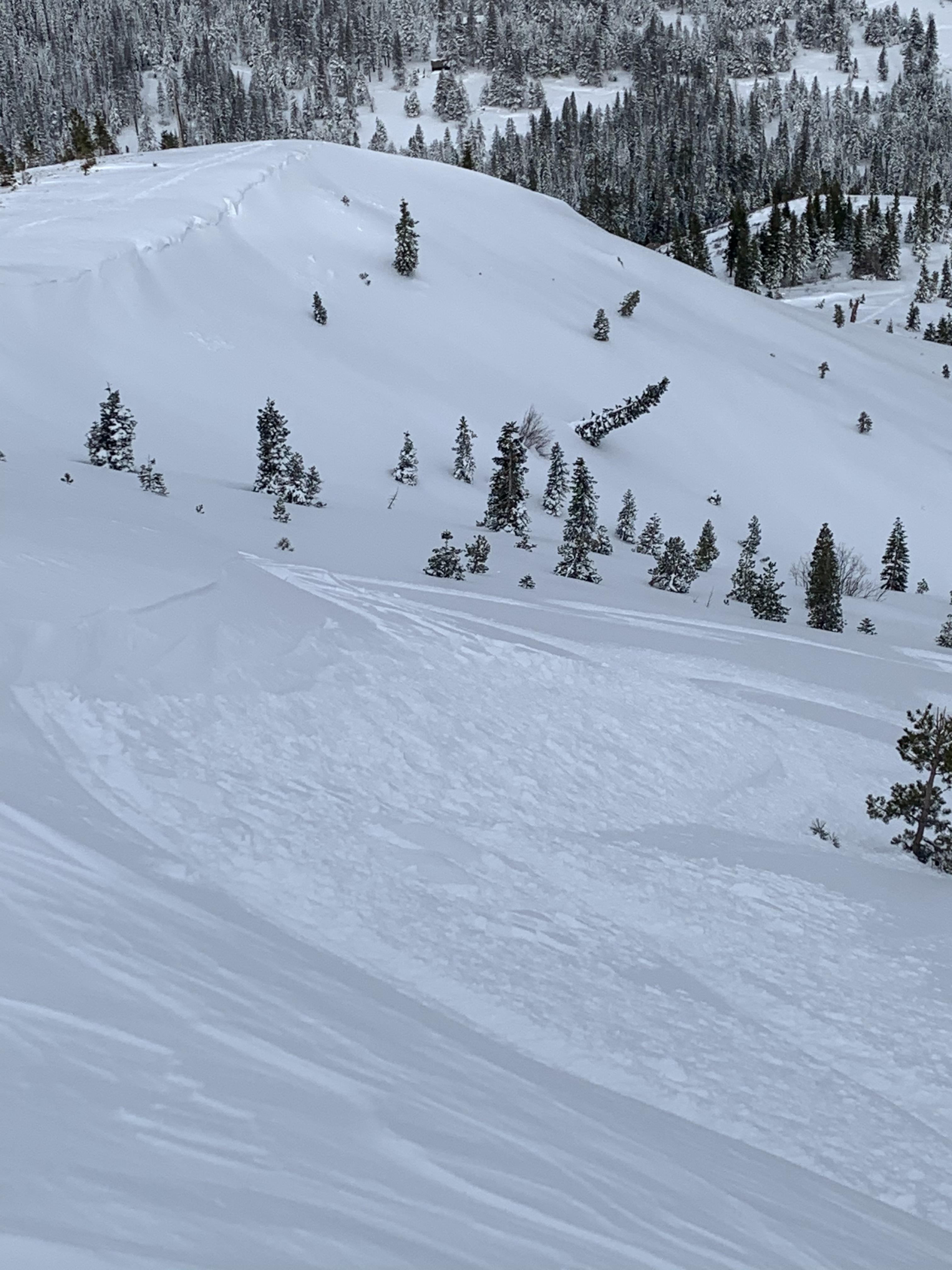| Monday | Monday Night | Tuesday | |
|---|---|---|---|
| Weather: | Cloudy. Chance of snow in the morning then a slight chance of snow in the afternoon. Snow levels below 7000 feet. Chance of precipitation is 50%. | Mostly cloudy with a slight chance of snow in the evening then becoming partly cloudy. Snow levels below 7000 feet. Chance of precipitation is 10%. | Sunny. Snow levels below 7000 feet. Chance of precipitation is 0%. |
| Temperatures: | 24 to 29. deg. F. | 10 to 16. deg. F. | 30 to 35. deg. F. |
| Mid Slope Winds: | East winds to 10 mph. | East winds 10 mph increasing to east 10 to 20 mph after midnight. | East winds 10 to 20 mph with gusts up to 35 mph in the morning decreasing to east 10 to 15 mph in the afternoon. |
| Expected snowfall: | 80% probability up to 2 inches. 20% probability of 2 to 4 inches. | SWE = less than 0.10 inch. | Trace amounts. | SWE = trace amounts. | No accumulation. | SWE = none. |
| Monday | Monday Night | Tuesday | |
|---|---|---|---|
| Weather: | Cloudy. Chance of snow in the morning then a slight chance of snow in the afternoon. Snow levels below 7000 feet. Chance of precipitation is 55%. | Mostly cloudy with a slight chance of snow in the evening then becoming partly cloudy. Snow levels below 7000 feet. Chance of precipitation is 10%. | Sunny. Snow levels below 7000 feet. Chance of precipitation is 0%. |
| Temperatures: | 20 to 25. deg. F. | 8 to 14. deg. F. | 26 to 32. deg. F. |
| Ridge Top Winds: | Northeast 10 to 15 mph in the morning becoming light. | North around 15 mph with gusts to 30 mph increasing to northeast 30 to 40 mph with gusts to 80 mph after midnight. | Northeast 25 to 40 mph with gusts to 80 mph decreasing to 15 to 25 mph with gusts to 50 mph in the afternoon. |
| Expected snowfall: | 60% probability up to 2 inches. 40% probability of 2 to 4 inches. | SWE = up to 0.10 inch. | Up to 1 inch. | SWE = less than 0.10 inch. | No accumulation. | SWE = none. |















 Dec 27 skier
Dec 27 skier 







